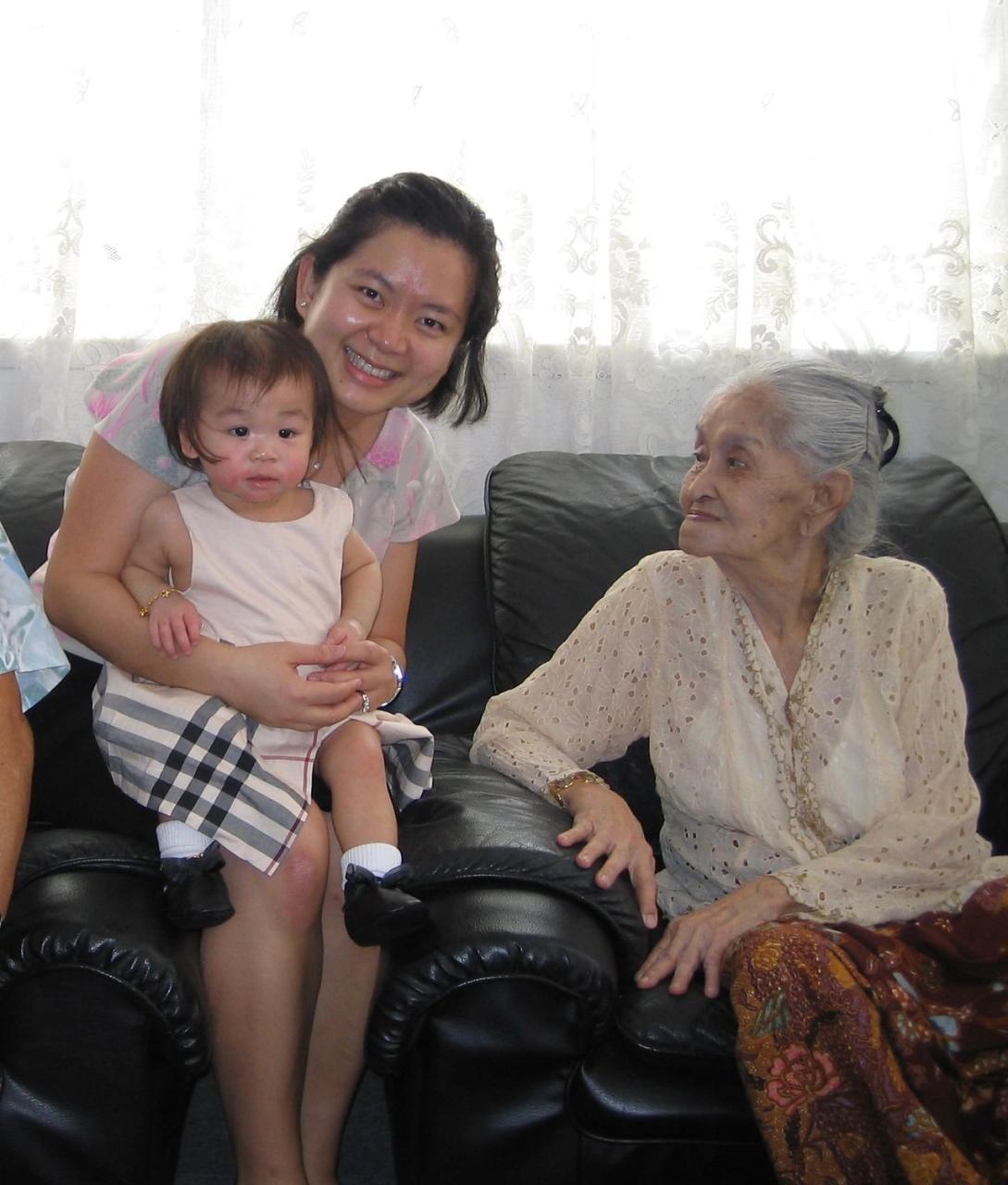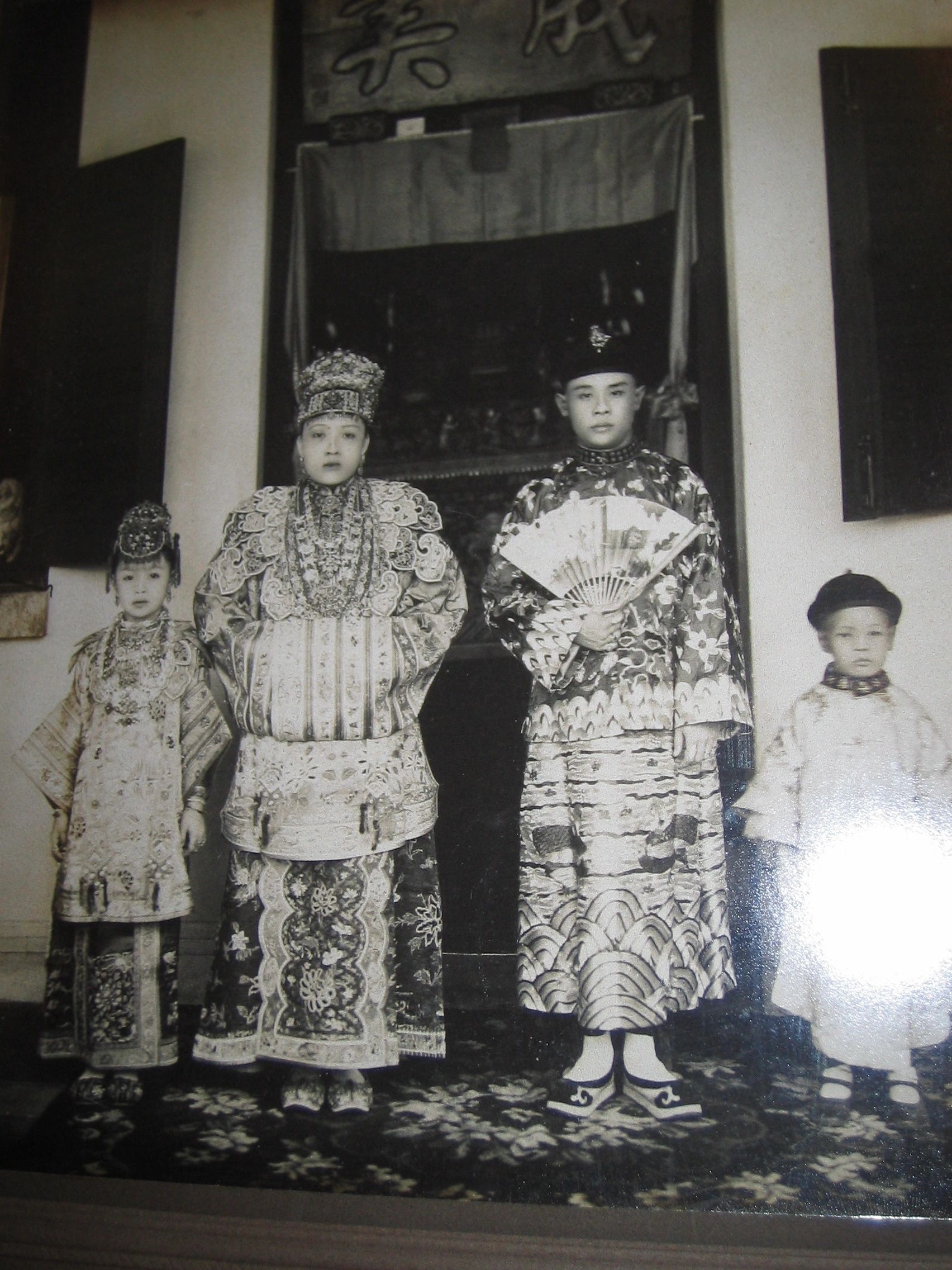The wedding of my grandaunt in the 1930s. She was first cousins with my paternal grandfather.
My Koh Poh Beng Neo (Koh Poh is the term for grandaunt, Beng Neo her very Nonya name) was one of the old relatives I had interviewed for my cookbook project. I posted the Golden Agar Agar recipe attributed to her in my previous blog. It received the most hits ever. I have since taken the post down, along with others, wary about publishing any of my cookbook recipes online.
Whenever Chinese New Year rolled around, Koh Poh was one of the most important relatives whom we had to visit. She was a grande dame within the extended family and particularly for me, the closest I had to a grandparent considering that all of mine were not alive when I was born. There were three things I did whenever we visited:
i) it was absolutely customary to ‘soja’ (kneel before her) to wish her “Panjang panjang umor” (which literally means ‘long life’),
ii) mill around the dining room to gaze at her wedding photo,
iii) partake of her signature golden agar agar.

Bringing my daughter to visit my grandaunt. Koh Poh ended up calling me Anak Hong Kong to identify me as the child who moved to Hong Kong (for work).
Koh Poh got married at around sixteen years old. Her groom might still very well have been attending the prestigious boys’ school, Raffles Institution, at that point! She was matchmade and she embodied the old-fashioned Nonya in her traditional garb, her patois and her manners. Yet, she was also modern. She attended an all-girls’ school, played the piano and swing-danced. She spoke and wrote English fairly well. She enjoyed her tipple of Courvoisier.
When I needed to learn how to pound spices after my mother’s passing, Koh Poh scheduled an appointment. I was to arrive at her kitchen in the late afternoon when the sun was coming down and it was ‘not too hot’. The helper had prepared her tea and biscuits and she sat by the table giving me instructions while I kneeled on the floor beside the mortar and pestle.
Koh Poh described to me that potential mothers-in-law went searching for prospective brides and judged their cooking proficiency by the pounding rhythm and fineness of their rempah spice paste. The mortar and pestle, called batu lesong (mortar and pestle), produces a more refined spice paste as opposed to using the electric blender. As I had mentioned in my cookbook, there is a “more pronounced kick and tighter fusion of spices brought about by the pounding”.
I made my way through the pounding, sweating rather profusely. It baffled me as to why I would add the reconstituted ingredients towards the end. It made complete sense as the moisture helped to make the spice paste more creamy.
I recorded Koh Poh’s instructions copiously. Eventually, this went into the 2012 cookbook “Growing Up in a Nonya Kitchen” as follows:
“Whether by pounding with the mortar and pestle or blending with an electric food processor, adding ingredients in the right sequence will contribute to a finer paste. The harder and drier ingredients such as candlenuts, fennel, cumin and coriander seeds are pounded first, followed by sliced up galangal, turmeric and lemon grass in that order. And then red chillies and finely sliced shallots.
Soaked dried chillies are then added. Having been reconstituted in water, the chillies provide some moisture, which helps to bind the spice paste. Belachan, or dried prawn (shrimp) paste, is added last, its pasty texture enhancing the consistency of the pounded spices further. As belachan is salty, you may want to stagger the amount added to control the saltiness of the spice paste.”
Excerpt from “Growing Up in a Nonya Kitchen”, 2012. All rights reserved.
